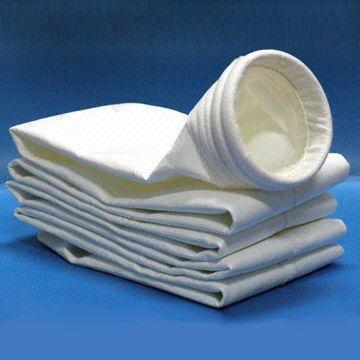Dust Collector Filter Bag Specification
A dust collector filter bag is a specialized filtration device used within dust collection systems to separate dust and particulate matter from the air. These bags are made from various materials and are integral in ensuring that only clean air is expelled from the dust collection system, thereby protecting both the environment and the equipment.
Importance of Dust Collector Filter Bag:
Air Quality: They ensure that the air released from the dust collection system is free from harmful dust particles, contributing to a cleaner and healthier environment.
System Efficiency: By capturing dust effectively, filter bags help maintain optimal airflow and system performance, reducing the need for excessive energy consumption.
Equipment Protection: They protect other components of the dust collection system from dust damage and wear.
Regulatory Compliance: Helps in meeting industry standards and regulations regarding air quality and emissions.
Key Specifications of Dust Collector Filter Bags:
Material: The choice of material (e.g., polyester, polypropylene, PTFE) affects the bag’s durability, filtration efficiency, and suitability for different dust types.
Dimensions: Includes the bag’s length and diameter, which must match the dust collector’s specifications.
Filter Media: Determines the filtration efficiency and dust holding capacity. Common ratings include micron ratings, which indicate the size of particles the filter can capture.
Air Permeability: Affects airflow through the bag, impacting the dust collector’s efficiency and energy consumption.
Temperature and Chemical Resistance: Specifies how well the filter bag can withstand high temperatures and corrosive substances.
Cleaning Method: Some bags are designed for mechanical cleaning, while others may be washable or disposable.
| Specification | Description | Typical Values/Examples |
|---|---|---|
| Material | The material from which the filter bag is made, affecting its durability, filtration efficiency, and resistance. | Polyester, Polypropylene, Nomex, PTFE, Fiberglass |
| Bag Dimensions | The size and shape of the filter bag to ensure proper fit and functionality in the dust collection system. | Length: 3-12 feet, Diameter: 4-8 inches |
| Filter Media | Type and density of the filter media, influencing filtration efficiency and dust holding capacity. | Micron Rating: 1-100 microns, Fiber Density: varies |
| Air Permeability | Measurement of how easily air can pass through the filter media, impacting system efficiency. | CFM (Cubic Feet per Minute) |
| Burst Strength | The maximum pressure the filter bag can withstand before failing. | Measured in psi (e.g., 10-20 psi) |
| Temperature Resistance | The maximum temperature the filter bag can handle without degradation. | Standard: Up to 180°F (82°C), High-Temp: Up to 500°F (260°C) |
| Chemical Resistance | The ability of the filter bag to resist damage from chemicals in the dust. | Varies by material: e.g., Polypropylene for corrosive dust |
| Cleaning Method | How the filter bag can be cleaned and maintained. | Mechanical Cleaning, Washable, Disposable |
| Bag Closure Type | The mechanism used to attach the filter bag to the dust collector. | Snap Band, Cuff and Clamp |
| Filtration Efficiency | The ability of the filter bag to capture dust particles, often measured as a percentage. | Efficiency: 90%-99.9% |
| Dust Holding Capacity | The amount of dust the filter bag can hold before it needs cleaning or replacement. | Varies by application and material |
| Customizations | Options for tailoring the filter bag to specific needs. | Custom Sizes, Special Coatings |


